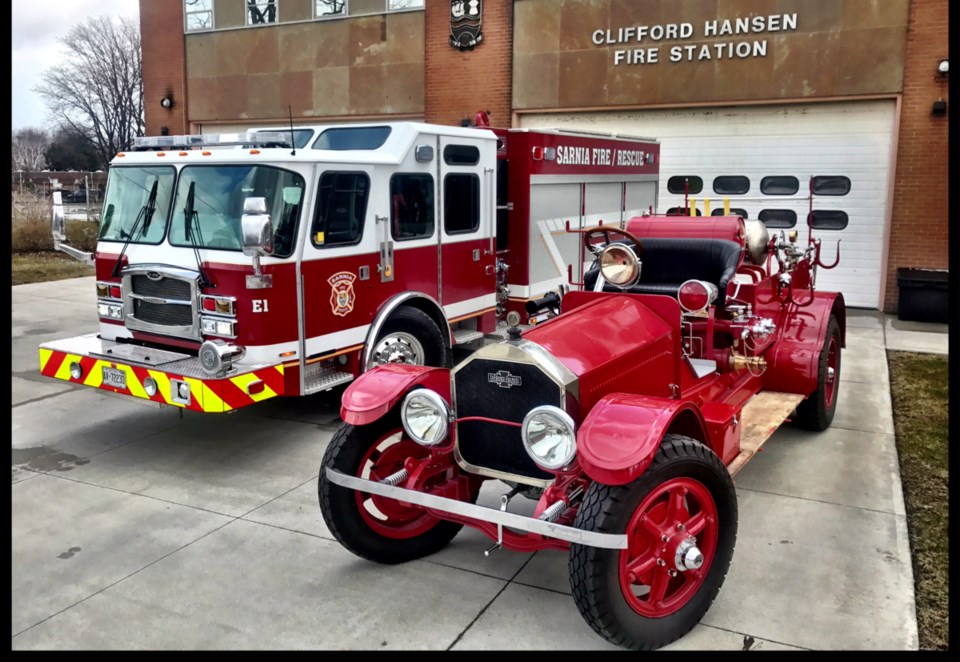Phil Egan
Journal reader Fran VerBeem recently sent along a copy of ‘Sarnia Reports’ from 1953.
Fran’s father H.D. Cook was the city’s building inspector, and the document contains end-of-year summaries compiled by various departments at City Hall.
It’s a valuable peek behind the curtain of time.
In the booklet’s opening pages Mayor W.C. Nelson reminded residents the city had annexed a large portion of Sarnia Township just two years earlier. Indeed, from 1950 to 1954 Sarnia’s population leaped by 29%, to 40,000 from 31,000.
A devastating tornado had struck the city in May of 1953 destroying, among other things, 1,500 large trees. The Parks Board, from its $50,000 annual budget, had already planted about 350 new trees, Chairman W.E. Germain reported.
The Tornado Relief Committee had dispersed $30,000 in uninsured claims covering furniture, bedding and clothing in response to 220 claims.
The Welfare Department reported 157 citizens were receiving assistance, a slight increase from 1952.
William Rogers, Director of the Board of Education, noted that 5,150 elementary students and 1,700 high school students attended Sarnia’s 24 schools.
Another 2,000 students were enrolled in six Roman Catholic schools. They were taught by 57 teachers – 20 of them sisters of St. Joseph.
The Sarnia Hydro-Electric omission served a record 12,000 customers– a 62% increase in three years. It took the commission one full week to restore all power following the tornado, which it described as the commission’s worst challenge since its 1916 founding.
The Sarnia Public Library declared the city to be among North America’s “best read.” On average, six books were borrowed for every man, woman and child that year, and a new 2,600-volume bookmobile was also now in service.
James Torrance was appointed Chief of Police that June to replace S.C. Pratt. Chief Torrance introduced a new traffic division, which was staffed by Sgt. E.W. Duffield and Constables Clayton Jones, Don Symington, future Chief Robert Cook, Edward Millard, Robert Young and Miss Aura Clothier.
The police force in 1953 had 47 officers, detectives, patrolmen and constables, including a new four-man morality squad.
The big news in Fire Chief Robert Armstrong’s department was the construction of Fire Station No. 3, at the corner of Michigan Avenue and Colborne Road. The new station was needed to serve the rapidly expanding north end of the city, and added to the main firehall on George Street and No. 2 Station on Huron Boulevard.
Today, 69 years later, a new 8,500-square-foot replacement firehall is under construction on the same Michigan Avenue lot. And when it’s done, the station will display a remarkable 1921 LaFrance fire engine owned by the Sarnia Professional Fire Fighters Association.
The century-old engine will be a constant, visual reminder of the city’s progress.
Got an interesting tale? Contact columnist Phil Egan at [email protected]
